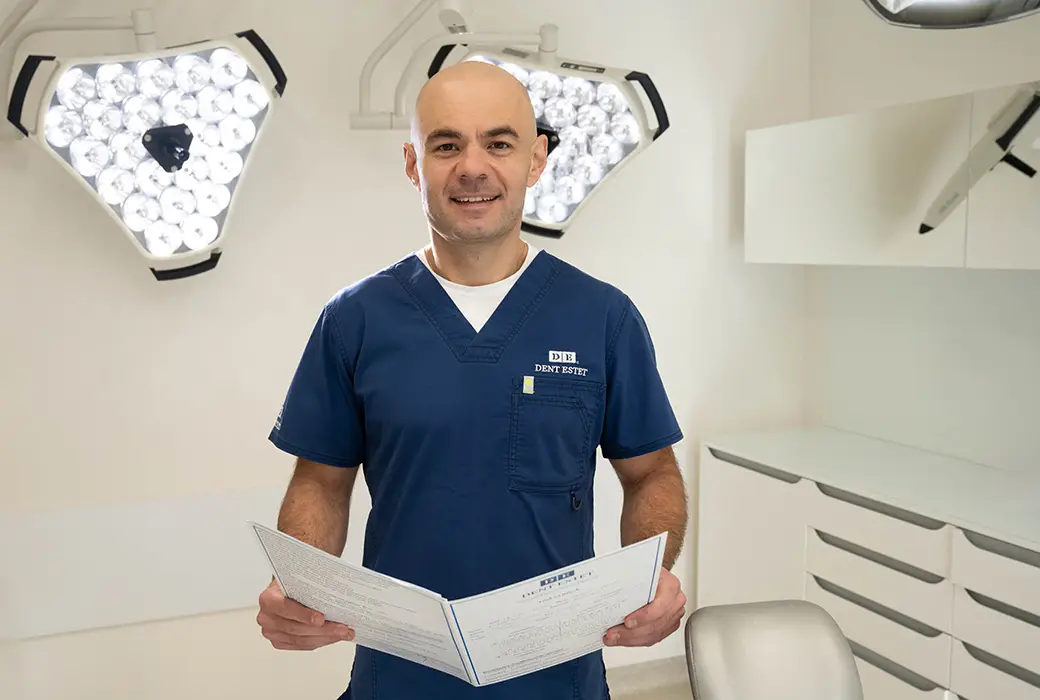
Maxillary sinusitis
Maxillary sinusitis is a commonly encountered acute condition, so the dentist must be able to distinguish this condition from a dental one.
Acute sinusitis is a bacterial infection that usually occurs following a viral infection of the upper respiratory tract (URTI) (Haemophilus, Pneumococcus, Streptococcus, Staphylococcus, and anaerobes) and can affect any of the paranasal sinuses.
The maxillary sinuses are the most related to the dentist’s activities because they can be interconnected with pain experienced by a patient, which may be caused by sinus infections.
Maxillary sinusitis can often be incidentally observed on X-rays during a dental check-up. Therefore, it is crucial that once at the dental office, the dentist thoroughly discusses the patient’s medical history and recommends all necessary clinical investigations to obtain an accurate diagnosis and develop a comprehensive treatment plan.
What are the maxillary sinuses?
The maxillary sinuses are two air-filled cavities on either side of the nose, covered by sinus mucosa. They help in air filtration and contribute to speech.

What is maxillary sinusitis?
Maxillary sinusitis is the inflammation of the mucous membrane in the maxillary sinuses caused by bacteria and fungi. Often, maxillary sinusitis is caused by a mixed infection, which can also include a fungal infection.

Causes of maxillary sinusitis
The most common way for maxillary sinusitis to occur is through the transfer of an infection from the nasal cavity to the maxillary cavity.

There are also situations where the infection spreads from the teeth, particularly the two premolars, and sometimes the canine, to the sinuses. These situations are caused by complicated and deep cavities, incorrect endodontic treatments, traumatic extractions, or incorrect insertion of a dental implant.
Other factors that can lead to maxillary sinusitis include septal deviation, acute or chronic rhinitis, the presence of polyps, tumors, gastroesophageal reflux, HIV, or other immune system disorders, cranio-cerebral or cranio-facial trauma.
Types of maxillary sinusitis:
Maxillary sinusitis can be acute or chronic.
Acute maxillary sinusitis can be identified by the following symptoms:
- pain on one side of the face;
- nasal obstruction;
- purulent nasal discharge on one side;
- fever (38-39 degrees Celsius);
- persistent unpleasant odor or even absence of odor.
Chronic maxillary sinusitis does not present symptoms as evident as those of acute maxillary sinusitis, but once identified, they should not be ignored:
- dull pain in the affected sinus (especially when the head is tilted) and morning headaches;
- unilateral nasal discharge;
- throat irritation;
- nasal congestion and irritating cough;
- halitosis (bad breath);
- feeling of fatigue.
Maxillary sinusitis – symptoms
Most often, maxillary sinusitis is mistaken for a complication of a cold, with the difference being that in maxillary sinusitis, the symptoms worsen, whereas in a cold, they tend to improve after 6-8 days.
Both acute and chronic maxillary sinusitis share the following symptomatic manifestations:
- general fatigue;
- blocked sinuses;
- feeling of pressure in the sinus area or in the teeth;
- headache/migraines;
- intensely colored and abundant nasal discharge;
- cough with expectoration;
- heavy breathing;
- fever (usually only in the first few days);
- facial swelling;
- nasal obstruction;
- sore throat;
- inflamed eyes;
- ear pain;
- reduced sense of smell and taste;
- tooth pain;
- vision disturbances;
- stiff neck.
Maxillary sinusitis - diagnosis
Although the dentist can detect irregularities in the sinuses through radiological investigations such as digital X-rays or computed tomography, they will refer you to an ORL specialist for an accurate diagnosis and appropriate treatment of the condition.
Additionally, the ORL specialist will perform other specific investigations such as cultures and nasal tests, nasal endoscopy, and allergy tests.

Maxillary sinusitis - treatment
Treatment for maxillary sinusitis can be either preventive or curative.
Preventive treatment involves addressing and avoiding all dental issues and accidents that could lead to the development of maxillary sinusitis, such as:
- performing root canal fillings when cavities are not close to the nerve;
- treating all existing apical infections, placing dental implants without perforating the sinus membrane;
- closing all oro-sinus communication pathways that occur following tooth extractions;
- staying hydrated with water or natural fruit juices;
- getting a minimum of 8 hours of sleep per night;
- avoiding areas with smoke;
- avoiding allergens.
These include measures such as maintaining distance from sick individuals, frequent hand hygiene, and ventilating closed spaces.
Curative treatment for chronic maxillary sinusitis involves removing the causative factor, along with medication and surgical treatment.

After removing the causative factor, sinus drainage is ensured, and antibiotic and anti-inflammatory treatment is administered. If the symptoms do not resolve or improve following this treatment, the ORL specialist will perform surgery to unblock the sinuses.
If acute maxillary sinusitis is caused by an infection in a tooth, the dentist will remove the causative factor. If the tooth responsible for the sinusitis is irrecoverable, meaning it is too structurally damaged, it will be extracted.
If the tooth can be preserved, it will be treated with root canal therapy, waiting for symptom relief and monitoring the case radiologically.
After removing the causative factor, drainage is ensured through nasal decongestants or nasal punctures.
Medication is essential for this type of condition.


